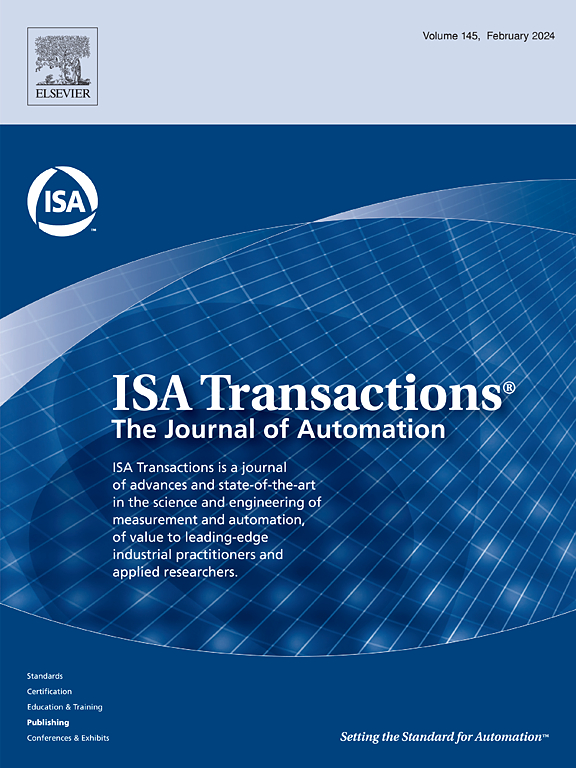Hierarchical RL-ESN control for autonomous underwater vehicle: 6-DOF large angle rotation maneuvering
IF 6.5
2区 计算机科学
Q1 AUTOMATION & CONTROL SYSTEMS
引用次数: 0
Abstract
The attitude representation of the autonomous underwater vehicle (AUV) typically relies on Euler angles and unit quaternions. However, existing works have demonstrated that both approaches exhibit inherent limitations when solving large-angle rotation maneuvers, primarily characterized by singularities and unwinding phenomena. In light of these limitations, this article investigates a model-free tracking control scheme for AUV to perform arbitrary large-angle rotation maneuvers in six degrees of freedom (6-DOF). Specifically, a rotation matrix-based error dynamics is constructed to achieve a globally unique attitude representation. A key technical obstacle is that defining attitude error directly via the rotation matrix complicates controller design. To circumvent this problem, an alternative error metric is presented to transform the rotation matrix-based attitude error from the special orthogonal group in three-dimensional space (SO(3)) to Euclidean space. Distinguished from a single estimation network, a hierarchical echo state network (ESN) is established to estimate hydrodynamic coefficients and actuator faults, which comprises multiple independent subnetworks to conduct various estimation tasks. Moreover, a collaborative critic network (CCN) is utilized to generate reinforcement signals, endowing the hierarchical ESN with favorable learning capability. In this way, the system robustness is significantly enhanced while ensuring high tracking performance. Finally, rigorous theoretical analysis and numerical simulations are presented to show the effectiveness and superiority of the proposed control scheme.
自主水下航行器的分层RL-ESN控制:六自由度大角度旋转机动。
自主水下航行器(AUV)的姿态表示通常依赖于欧拉角和单位四元数。然而,现有的研究表明,这两种方法在求解大角度旋转机动时都存在固有的局限性,主要表现为奇点和unwind现象。针对这些局限性,本文研究了一种无模型跟踪控制方案,用于水下机器人在六自由度(6-DOF)下进行任意大角度旋转机动。具体地说,构造了一个基于旋转矩阵的误差动力学,以实现全局唯一的姿态表示。一个关键的技术障碍是直接通过旋转矩阵定义姿态误差使控制器设计复杂化。为了解决这一问题,提出了一种替代误差度量,将基于旋转矩阵的姿态误差从三维空间(SO(3))的特殊正交群变换到欧几里德空间。与单一估计网络不同,建立了分层回声状态网络(ESN)来估计水动力系数和执行器故障,该网络由多个独立的子网组成,以执行各种估计任务。此外,利用协同批评网络(CCN)生成强化信号,使分层回声状态网络具有良好的学习能力。这样在保证高跟踪性能的同时,显著增强了系统的鲁棒性。最后,通过严格的理论分析和数值仿真,验证了所提控制方案的有效性和优越性。
本文章由计算机程序翻译,如有差异,请以英文原文为准。
求助全文
约1分钟内获得全文
求助全文
来源期刊

ISA transactions
工程技术-工程:综合
CiteScore
11.70
自引率
12.30%
发文量
824
审稿时长
4.4 months
期刊介绍:
ISA Transactions serves as a platform for showcasing advancements in measurement and automation, catering to both industrial practitioners and applied researchers. It covers a wide array of topics within measurement, including sensors, signal processing, data analysis, and fault detection, supported by techniques such as artificial intelligence and communication systems. Automation topics encompass control strategies, modelling, system reliability, and maintenance, alongside optimization and human-machine interaction. The journal targets research and development professionals in control systems, process instrumentation, and automation from academia and industry.
 求助内容:
求助内容: 应助结果提醒方式:
应助结果提醒方式:


